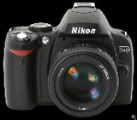After discussing about FOCAL LENGTH, we'll now be discussing ISO. So what exactly is ISO?
ISO
ISO is the measurement of how sensitive a digital camera's sensor is to light. These are represented by ISO numbers (e.g. 50, 100 - 6,400). A higher ISO number would mean a higher sensitivity to light while lowering it would mean the opposite. So how important is the ISO setting?
Higher ISO numbers indicate a higher sensitivity to light, so less time is needed to expose a picture. Most digital cameras let you control the ISO setting to allow the use of higher shutter speeds and/or smaller apertures, according to circumstances.
In practice, high ISO settings can be used when you have plenty of light and you need a fast shutter speed to stop action. The fast shutter speed can help you capture a sharp image even when you don’t have a tripod. The faster that shutter clicks, the less time you have to move the lens and blur the picture. You would have an ISO of 200 and above to achieve this.
In contrast, inside shots without flash will need a lower ISO setting. Perhaps you want to catch a moody shot of people sitting together in candlelight at a dinner. That setting doesn’t produce enough light to register on the sensor unless you require the subjects to sit there for a few minutes. Even then, the saturation of the film can break down (meaning the colors will look weird), so you need to use a low ISO setting with a longer shutter speed, one that will register an image with very little light(perhaps an ISO of 50).
That is all for ISO, next time we'll be tackling about SHUTTER SPEED.












0 comments
Post a Comment